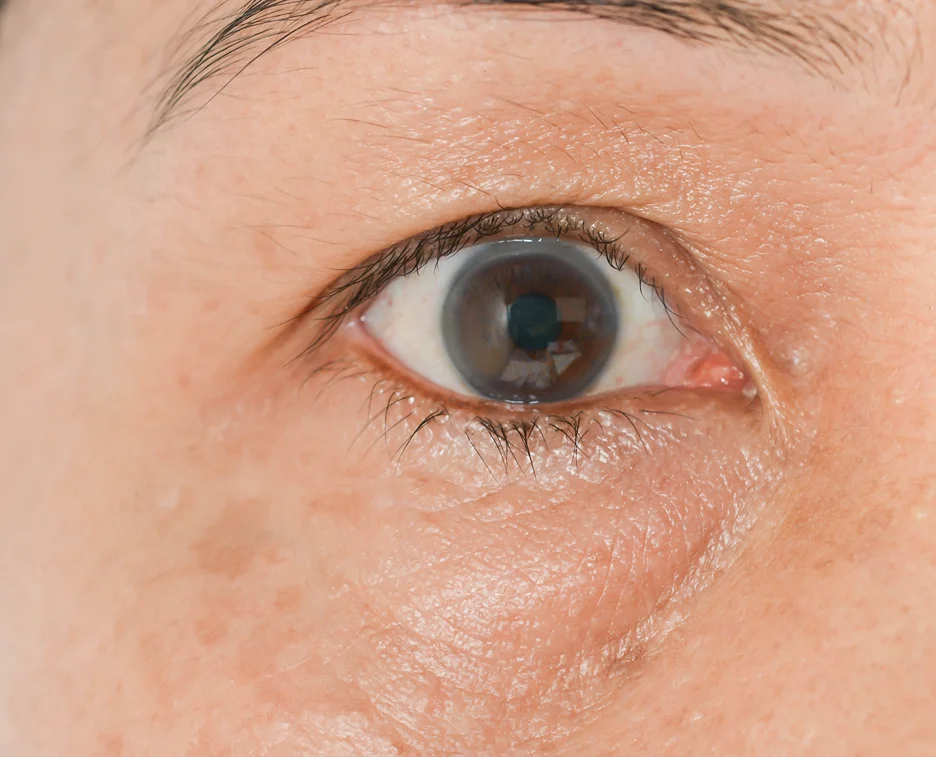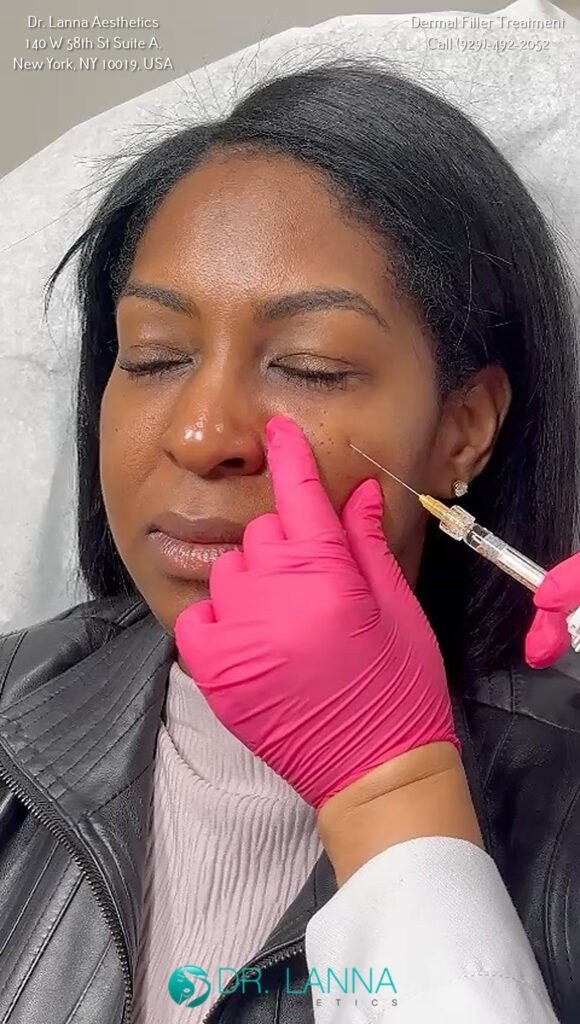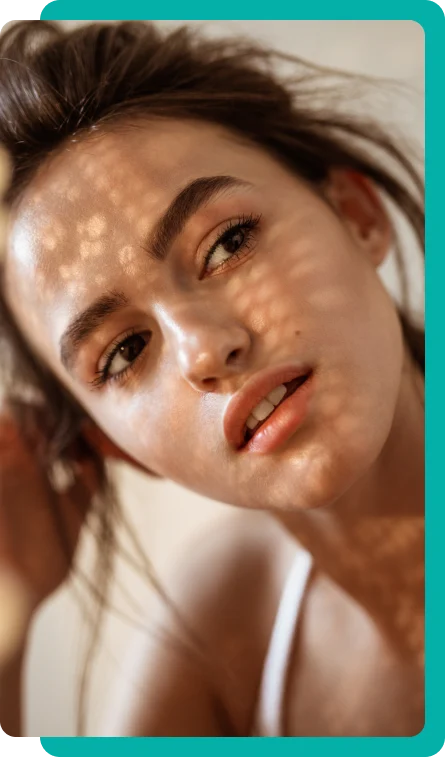Tear trough filler treatment is a popular procedure for making your eyes look younger, fuller, and more radiant. Many patients prefer this cosmetic solution because it's non-invasive, saving them from lengthy downtime and serious health risks, unlike with facial plastic surgery. However, experiencing complications remains to be a possibility, but it’s pretty rare and treatable.
So how do you treat swelling months after under-eye filler treatment? Swelling months after having dermal filler injections of the tear trough can be treated by applying a cold compress, taking NSAIDs, antibiotics, or steroids, or being injected with hyaluronidase to dissolve hyaluronic acid filler products.
Dermal filler treatment is a recommended anti-aging and facial augmentation solution without cosmetic surgery. It can resolve many cosmetic concerns, from mild to severe lines and facial wrinkles to adding volume to enhancing your contours.
Dermal fillers also offer solutions to patients with dark, sunken under-eyes, with tear trough filler treatment. This procedure involves injecting your under-eyes with a gel-like substance to add volume and boost collagen production.
It’s usually a low-risk option, like many dermal filler treatments, but experiencing complications, like swelling, is still possible. You can treat this by applying a cold compress, taking NSAIDs, having antibiotics, receiving steroids, and getting injected with hyaluronidase.
Cold compress is one of the first treatment options for patients with swelling after having facial fillers, be it a post-procedural reaction or a delayed inflammation. Cold temperatures help constrict the blood vessels in the treatment area, controlling their circulation.
A study has reported a recommendation of applying a cold compress on a patient with swelling at the side of their left lower eyelid. This swelling appeared 3 months after they received cosmetic fillers at the under-eyes and midface without any trigger.
Delayed swelling from filler injection treatment is followed by bruising the next day. Healthcare providers prescribed medications and a cold compress. Improvements were noted after the 4th day.
NSAIDs or non-steroidal anti-inflammatory drugs will also help as the first line of medication for delayed-onset inflammation. NSAIDs help reduce inflammation, pain, fever, and blood clots. Your under-eyes might be swelling due to inflammation, so taking these medications might greatly help.
A clinical trial has reported that NSAIDs were used to treat swelling on a patient's right lower eyelid 6 months after receiving a facial filler injection for the tear trough and midface. The swelling also came with flu-like symptoms and dental pus on the other side. The patient was prescribed NSAIDs along with other medications. The next day, the swelling subsided.
But you must consult your practitioner or healthcare provider first before taking NSAIDs. Patients aren't advised to take NSAIDs soon after having their dermal filler injections because these medications might interfere with the mechanism of the product. This might affect its results.
Swelling is also one of the common post-procedural side effects of dermal filler. You might want to be sure if your symptom is a complication from the cosmetic injectables or a normal reaction to the product.
Antibiotics are also used to treat infections from dermal filler complications, like swelling and the development of granulomas. Some cases of inflammation from cosmetic injectables are caused by bacterial infection. Antibiotics can help reduce these symptoms as it kills bacteria and keeps them from multiplying in the body.
The treatment plan for a patient with a swelling lower eyelid at the right also included antibiotics. This swelling is concurrent with a dental abscess and flu-like symptoms, making healthcare providers also prescribe NSAIDs. The patient reported subsiding adverse reactions the following day.
Steroids are also used to treat complications from a dermal filler injection as it resolves inflammation by reducing the reaction of your immune system. A study has reported prescribing oral steroids to a patient experiencing asymmetrical swelling on both outer eyelids.
The patient had experienced this 14 months after having dermal fillers to the cheeks and tear trough. The patient had first taken oral histamines to no avail. Their doctors then prescribed reducing doses of oral steroids for 5 days, resulting in symptoms subsiding.
Hyaluronidase is a common solution for treating dermal filler complications, specifically cases caused by hyaluronic acid filler. This enzyme works by breaking down hyaluronic acid in the treatment area. A study has included injections of this medication as a reliable solution for granuloma, vascular occlusion, and inflammation.

Dermal filler treatment is a low-risk solution for reducing the appearance of fine lines and facial wrinkles and enhancing your features, as it adds volume and boosts collagen production. But like many cosmetic procedures, it can still develop rare complications, like delayed-onset swelling.
You might experience swelling months after having your dermal filler treatment due to an error in the procedure or the development of a bacterial infection. You may also be experiencing a type 4 hypersensitivity reaction or have an underlying health condition.
Having dermal fillers is usually a safe and low-risk procedure, when done by a highly-trained professional. Many complications happen due to errors in the facial filler injection, like administering too many facial filler products, having the wrong injection technique, or injecting in inaccurate treatment areas.
Error in the dermal filler injection can make the product clump or migrate, leading to risks of non-inflammatory nodules developing. This can also cause vascular occlusions. Receiving too much facial filler injection may apply pressure on blood vessels, obstructing blood flow.
Inexperienced injectors may also administer the product into a blood vessel accidentally instead of into the dermis. This also causes the dermal fillers to block your blood flow, leading to risks like skin necrosis, blindness, or stroke.
Swelling from having tear trough filler treatment might be caused by an infection from bacteria, viruses, fungi, or a combination of microbes. These organisms result in the development of inflammatory nodules months after your cosmetic procedure.
Some dermal fillers may grow biofilms due to bacterial contamination. This case usually happens when having your first dermal filler injection. Biofilms develop from densely-packed bacterial communities that attach themselves to living structures or inert surfaces. Inflamed nodules from an infection may not be easy to resolve due to polymers surrounding the biofilms.
Experiencing delayed-onset inflammation from eye filler treatment might be caused by the response of your immune system to the filler material. This hypersensitivity response may be caused by many factors, like bacterial contamination, the physiochemical properties of the injectable filler absorption, or the state of your immune system during the absorption of the product.
Type 4 hypersensitivity reactions are cell-mediated, specifically the CD4+ cells, and T lymphocyte-mediated. Some signs of this response are induration, erythema, and edema.
These symptoms start showing up at least 3 months after having an injectable filler procedure. The impurities of the injectable filler’s DNA fragments, endotoxins, and proteins might be some of the reasons for experiencing an immunostimulatory response.
Facial fillers have risks of complications other than delayed-onset swelling, like the development of nodules, erythema, vascular compromise, and biofilm. These are also pretty rare and may only happen under the hands of inexperienced injectors.
Nodules are lumps or abnormal tissue growth. Facial fillers can also cause nodules due to the development of bacterial biofilms, delayed-onset inflammation, hypersensitivity reactions, or infections.
Error in injecting cosmetic fillers may also result in nodules as the filler material migrates from the treatment area, but these lumps aren’t inflammatory. These are usually treated with antibiotics, steroids, or hyaluronidase. Healthcare providers may also perform a minor excision, usually in cases involving permanent fillers.
Erythema involves skin redness due to an infection or hypersensitivity reaction from cosmetic fillers. This sign is one of the early compilations of dermal fillers, appearing 48 to 72 hours after the procedure, but it may also show up after a few weeks. This symptom may be treated with steroids and vitamin K cream.
Vascular occlusion is a dermal filler complication involving an obstructed blood flow. This might be due to injecting the product into the blood vessels accidentally or administering a large volume that causes pressure, blocking blood circulation.
Vascular compromise may be treated with hyaluronidase injections, antibiotics, or aspirin. These signs of this complication are similar to normal side effects of dermal fillers, so you must see a highly-trained professional to diagnose your symptoms effectively.
Vascular occlusion can lead to necrosis, blindness, and stroke if undetected and left untreated. So you might want to keep in touch with your practitioner during your recovery to oversee your results and check for unwanted signs of complications.
Bacterial biofilms may sometimes form after having dermal filler injections. These have barriers protecting the bacteria from your immune system and antibiotics and can attach to many medical devices and solutions, including facial fillers.
Patients may risk complications due to biofilm infections when the filler product or tools used have been contaminated. They can lay dormant and become reactivated when triggered by their environment. Biofilms can result in nodules, granulomas, abscesses, or recurrent infections.
The treatment for this complication involves clarithromycin and oral ciprofloxacin. The patient may also receive hyaluronidase injections to dissolve the infected filler material and surgical excision.
Patients must stay in touch with their dermatologist or plastic surgeon during recovery. This allows them to receive a thorough assessment and ensure they’re healing safely, as some complications might easily be mistaken as a normal side effect and vice versa.
You must also know the difference between delayed-onset swelling due to complications and post-procedural side effects. Swelling and other signs of inflammation are also normal reactions of your body from having eye filler treatment. This is because dermal fillers also elicit acute inflammation as part of their mechanism and absorption. That’s why you might experience slight tenderness, bruising, pain, and other self-limiting side effects.
But note that complications may also display these reactions, some appearing right after your procedure while others months after receiving the injections. Assessment from a medical professional is necessary for determining the state of your symptoms and having the right treatment. This is especially when early detection and treatment are crucial for addressing complications.
Dermal filler treatments are FDA-approved and low-risk procedures, but you can also expect side effects after having the injections. These symptoms are normal reactions of your body to foreign material. If you’re experiencing adverse reactions from your eye filler treatment, you may do several steps to relieve the discomfort:
Consult your medical professional before taking any of these medications. Side effects from dermal fillers are usually mild and resolve on their own, taking around 24 hours to 2 weeks to subside.

Swelling months after your tear trough filler procedure may be resolved by taking medications, like antibiotics, NSAIDs, or steroids. It may also help to apply a cold compress. Your doctor might also opt to inject you with hyaluronidase to break down the filler material, depending on the condition of your complication. Complications are rare occurrences after eye filler treatment and usually happen only under the hands of inexperienced injectors.
Dr. Lanna Aesthetics is one of the most reputable aesthetic medicine clinics, performing over 10,000 successful procedures. Patients can expect different cosmetic solutions conducted by the best board-certified professionals in the industry. We also have a thorough process for your treatment plan to ensure a safe and effective beauty journey. Get started on having your tear trough filler and other procedures, and schedule a consultation today.

New Patients Enjoy $100 OFF on Tox or Filler Appointments!
*minimum 1 full syringe or minimum 25 units; Cannot be combined
